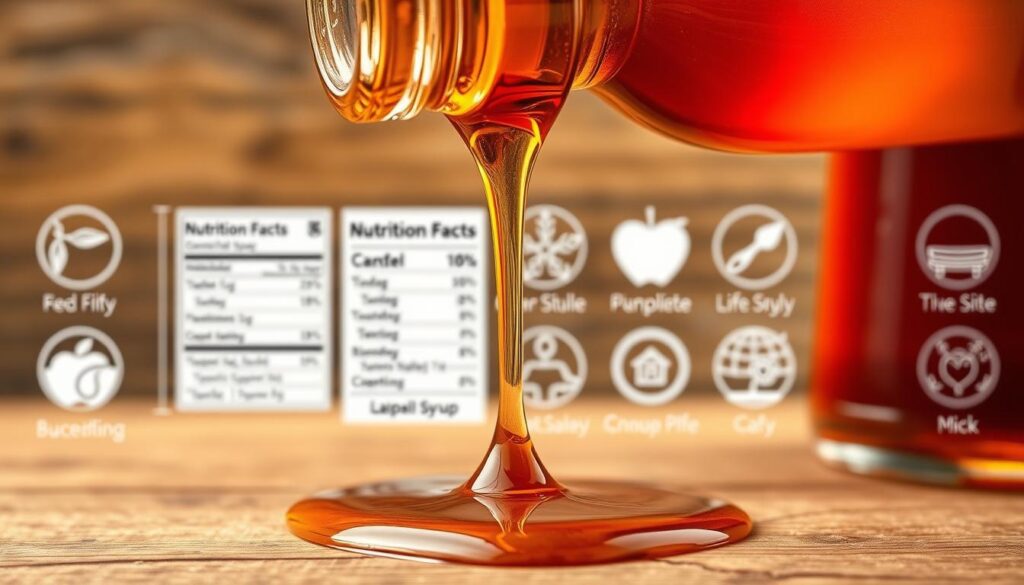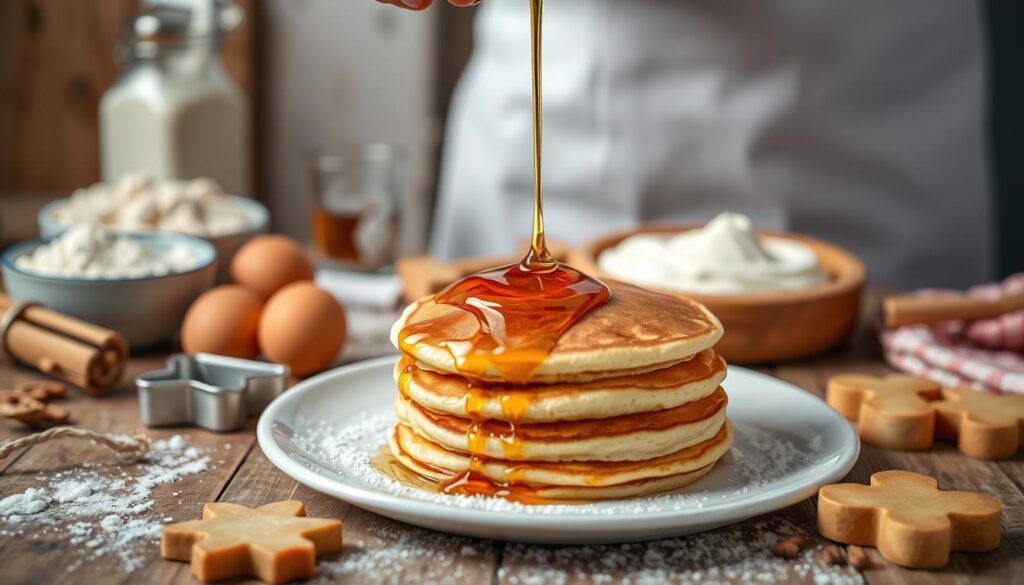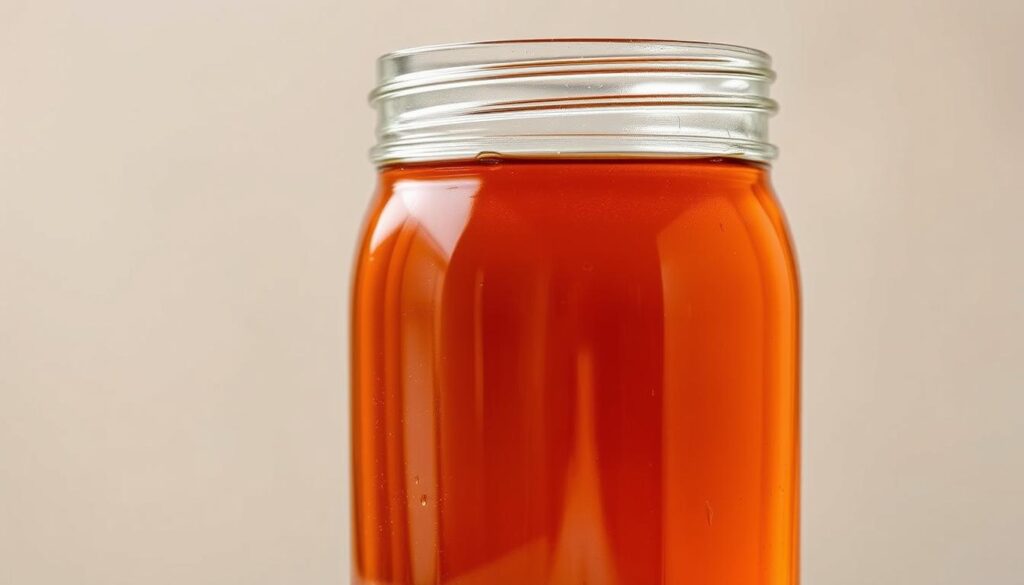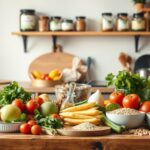Imagine a natural sweetener that captures the essence of forest wilderness—pure maple syrup represents the pinnacle of artisanal food crafting. This liquid gold transforms ordinary dishes into extraordinary culinary experiences. It offers a rich, complex flavor profile that commercial sweeteners simply cannot match.
Maple Syrup Organic represents more than just a condiment. It is a testament to traditional harvesting techniques passed down through generations of skilled sugarmakers in the northeastern United States. Each drop tells a story of careful cultivation, sustainable forest management, and respect for natural ecosystems.
The journey of pure maple syrup begins deep in maple forests, where trees stand as silent guardians of a time-honored tradition. Sugarmakers tap these majestic trees during late winter and early spring, collecting sap that will be transformed through a meticulous process of boiling and refining.
Selecting a natural sweetener like maple syrup means choosing quality over convenience. Unlike refined sugars, this liquid treasure retains minerals, antioxidants, and subtle flavor nuances that reflect the unique terroir of its forest origin. Organic certification ensures that each bottle meets stringent quality standards, free from synthetic pesticides and processing chemicals.
Maple syrup offers versatility beyond simple table sweetening. Chefs and home cooks alike prize this natural sweetener for its ability to enhance both sweet and savory dishes, from breakfast pancakes to gourmet marinades. Its depth of flavor elevates recipes, making it a staple in kitchens that prioritize authentic, wholesome ingredients.
Understanding Pure Maple Syrup: Nature’s Golden Elixir
Pure maple syrup is a journey from forest to table. It shows nature’s amazing transformation. The making of farm-fresh maple syrup starts with a special dance between maple trees and their surroundings.
The Science Behind Maple Sap Collection
Maple trees store starches in their roots and trunk during winter. As spring comes, these starches turn into sugar, creating the sweet liquid we call pure maple syrup. The climate in northeastern forests is perfect for sap production.
- Ideal temperature range: 40-50°F during day, 20-30°F at night
- Pressure changes trigger sap flow
- Trees must be 40+ years old for sustainable tapping
From Tree to Table: The Natural Process
Farm-fresh maple syrup production is a detailed process. It turns raw sap into liquid gold. Sugarmakers tap mature maple trees, collecting the clear liquid that will become syrup.
- Tree identification and selection
- Careful drilling of tap holes
- Sap collection using specialized tubing
- Boiling and reducing sap in evaporators
- Filtering and bottling the final product
To make just one gallon of pure maple syrup, it takes about 40 gallons of sap. This shows the skill and care that goes into making this natural sweetener.
The Benefits of Choosing Organic Maple Syrup
Choosing Maple Syrup Organic gives you a top-notch natural sweetener with great benefits. These syrups are more than tasty; they show a dedication to the environment and quality food.
The main perks of organic maple syrup are:
- Strict environmental protection practices
- No synthetic pesticides or chemical interventions
- Preservation of forest ecosystem health
- Higher nutritional value compared to conventional alternatives
Organic maple syrup is made under strict quality standards. Sugarmakers use sustainable forest management and keep collection areas clean. These steps make sure every syrup drop is top-notch in quality and health.
Studies show organic maple syrup has more antioxidants and minerals. The way it’s harvested protects maple trees and the forest. This makes the syrup good for you and the planet.
By picking organic maple syrup, you support green farming. You help save forests and keep traditional syrup-making alive. This choice is good for both people and the environment.
Maple Syrup Organic: Meeting Certification Standards
Organic maple syrup is a top choice for natural sweeteners. It goes through strict certification to ensure quality and care for the environment.
Certified organic maple syrup is more than just a sweetener. It shows a deep commitment to sustainable forests and quality. It keeps both consumers and nature safe.
USDA Organic Requirements
The USDA has clear rules for organic maple syrup. Producers must follow these important steps:
- No synthetic chemicals or pesticides in forest management
- Preservation of natural forest biodiversity
- Documented traceability of maple sap collection
- Regular independent inspections of maple forests
Sustainable Forest Management Practices
Producing sustainable maple syrup means caring for the forest. Sugarmakers use practices that keep the forest healthy and full of life.
“Sustainable maple syrup production is about nurturing the forest as much as harvesting its sweet bounty.” – Forest Stewardship Council
Quality Control Measures
Every bottle of certified organic maple syrup is tested thoroughly. This includes:
- Comprehensive sap testing for purity
- Monitoring of tapping techniques
- Regular laboratory analysis
- Tracking from forest to final product
This dedication to sustainable maple syrup shows a deep respect for nature and the environment.
Artisanal Production Methods in Organic Maple Syrup

Artisan maple syrup is the top of traditional maple harvesting. It’s more than just tapping trees. It’s a craft passed down through generations.
The making of handcrafted maple syrup starts with managing the forest well. Producers pick certain maple trees for their rich flavors.
- Careful tree selection for optimal sap quality
- Traditional hand-tapping methods
- Small-batch boiling techniques
- Minimal processing to preserve natural flavors
Making gourmet maple syrup needs precision and patience. Sugarmakers watch every step, from sap collection to bottling. They use wood-fired evaporators to keep the syrup’s unique taste.
Artisan maple syrup makers mix old techniques with new tech. They use special tools to keep the traditional process but make it better.
“True artisan maple syrup tells a story of landscape, climate, and craftsmanship in every drop.”
The end result is a top-quality product. It shows the hard work and care of organic maple syrup makers.
Grading Systems and Color Classifications
Pure maple syrup is more than just sweet. It has a complex world of flavors and classifications. The grading system for gourmet maple syrup helps consumers know what they’re getting. This makes it easier to pick the right syrup for cooking.
Maple syrup grades are based on color and light transmission. These factors affect the syrup’s flavor. Sugarmakers carefully classify their syrup. This way, consumers know exactly what they’re buying.
Understanding Maple Syrup Grades
The USDA has a grading system for maple syrup. It has four main grades:
- Golden Color, Delicate Taste: Lightest grade with subtle flavor
- Amber Color, Rich Taste: Slightly darker with more pronounced maple notes
- Dark Color, Robust Taste: Deeper color with strong maple character
- Very Dark Color, Strong Taste: Most intense flavor profile
How Color Affects Flavor Profiles
Color greatly affects the taste of gourmet maple syrup. Lighter grades come early in the season. They have a milder taste. Darker grades come later and have a stronger taste.
| Syrup Grade | Color | Flavor Intensity | Best Uses |
|---|---|---|---|
| Golden | Pale Yellow | Mild | Pancakes, Yogurt |
| Amber | Light Brown | Moderate | Baking, Glazes |
| Dark | Deep Brown | Strong | Cooking, Marinades |
| Very Dark | Extremely Dark | Robust | Robust Recipes |
Knowing these grades helps maple syrup lovers choose the right syrup. It’s perfect for their cooking adventures.
Health Benefits and Nutritional Value

Organic maple products are more than just a tasty natural sweetener. They are packed with nutrients that make them stand out from refined sugars. Unlike processed sugars, maple syrup has many health benefits.
Maple syrup’s nutritional profile shows several key health benefits:
- Rich in antioxidants that combat cellular damage
- Contains essential minerals like zinc and manganese
- Lower glycemic index compared to traditional sugar
- Natural source of energy with minimal processing
Studies show that maple syrup has unique health benefits. The pure maple syrup contains over 24 different antioxidants. These antioxidants help protect the body from oxidative stress and inflammation. Darker maple syrup grades have more of these compounds, making them great for a healthy diet.
Maple syrup is a healthier choice than refined sugars. A single tablespoon gives you:
| Nutrient | Amount |
|---|---|
| Manganese | 33% Daily Value |
| Zinc | 6% Daily Value |
| Calcium | 2% Daily Value |
While maple syrup should be used in moderation, it’s a better choice than refined sugars. It offers health benefits that refined sugars can’t match.
Maple syrup proves that not all sweeteners are created equal – sometimes, nature’s solutions are the most nutritious.
Sustainable Harvesting Practices in Maple Forests
Sustainable maple syrup production is a balance between caring for the environment and keeping traditional farming alive. The maple forest needs careful management to stay healthy and keep producing syrup.
Producers of organic maple syrup know how important it is to keep the forest diverse while getting their syrup. They do more than just tap trees; they take care of the whole forest.
Environmental Impact Considerations
The environmental impact of making sustainable maple syrup includes several important points:
- Protecting tree health during tapping
- Keeping the forest diverse
- Reducing harm to soil and water
- Protecting animal homes
Traditional vs Modern Tapping Methods
Organic maple syrup production has changed with new technology but also keeps traditional methods alive. New ways make tapping more efficient without harming the forest.
| Tapping Method | Tree Impact | Efficiency |
|---|---|---|
| Traditional Hand Tapping | Minimal | Low |
| Modern Vacuum System | Controlled | High |
| Advanced Sensor Technology | Precise | Very High |
Sugarmakers now use precision tapping techniques that are kinder to trees and better for syrup production. These methods show a dedication to protecting the environment and making high-quality organic maple syrup.
Cooking and Baking with Organic Maple Syrup

Pure maple syrup makes any recipe special. It adds more than sweetness. It brings depth and a rich flavor to both sweet and savory dishes.
Discovering the many uses of pure maple syrup opens up new cooking possibilities. Chefs and home cooks can use it in many ways:
- Breakfast recipes like pancakes and waffles
- Baking substitutions for refined sugar
- Marinades and glazes for proteins
- Salad dressings and vinaigrettes
- Dessert toppings and flavor enhancers
When baking, swap one cup of white sugar with ¾ cup of pure maple syrup. Also, cut down liquid ingredients by about ¼ cup. This keeps the recipe balanced. Lighter maple syrup grades are great for light baked goods. Darker grades are perfect for bold recipes.
The key is understanding how maple syrup’s natural sweetness can elevate your culinary creations.
Savory cooking also benefits from maple syrup. Use it to caramelize veggies, make glazes for meats, or add depth to salad dressings. Its flavor complements many ingredients well.
Trying out pure maple syrup turns cooking into a creative, flavorful journey. It celebrates the beauty of natural ingredients.
Storage Tips and Shelf Life
Keeping organic maple products fresh is key. Farm-fresh maple syrup needs special care to keep its great taste and health benefits.
Knowing how to store pure maple syrup is important. The right steps can make your organic maple products last longer. This ensures they stay flavorful and of high quality.
Optimal Storage Conditions
- Store unopened farm-fresh maple syrup in a cool, dark place
- Keep containers tightly sealed to prevent contamination
- Avoid direct sunlight and heat exposure
- Use glass or food-grade plastic containers for best preservation
Identifying Quality Degradation
Maple syrup lovers should look out for signs of quality loss:
- Unusual odors – showing fermentation
- Visible mold growth on the surface
- Crystallization or significant texture changes
- Off-color or cloudy appearance
After opening, keep it in the fridge. Stored right, farm-fresh maple syrup can last up to a year. It will keep its rich flavor and health benefits.
Pro tip: Always use clean utensils when scooping maple syrup to prevent contamination and extend its shelf life.
Seasonal Production and Best Time to Buy
The world of maple syrup is closely tied to nature’s seasons. Making artisan maple syrup is a traditional skill that relies on the weather and the maple tree’s yearly cycle.
The maple syrup season usually starts in late February and ends in early April. The best time for making syrup is during the “sugaring season”. This happens when it’s warm during the day but cold at night.
- Late Winter to Early Spring: Optimal sap collection period
- Temperature Range: 40°F during day, 20°F at night
- Peak Production: 4-6 weeks annually
Sugarhouse experts know that temperature changes make sap flow. Cold nights followed by warm days create pressure changes inside maple trees, making sap move from roots to branches.
“Each drop of maple syrup represents nature’s perfect timing and delicate balance.” – Maple Farming Collective
If you want the freshest maple syrup, buy it during or right after the sugaring season. Artisan producers make special batches then, with unique flavors that show the year’s weather.
Knowing about the seasons helps maple syrup lovers see the amazing skill behind this natural sweetener.
Supporting Local Maple Syrup Producers
The heart of sustainable maple syrup production beats in local communities across North America. Handcrafted maple syrup is more than a sweet treat. It’s a key economic lifeline for rural areas and a symbol of traditional farming.
Buying from local maple syrup producers connects us to a rich tradition. These small farmers keep old farming skills alive. They also boost local economies.
Community Impact of Maple Farming
Maple farming has a big impact on rural communities. It brings economic benefits through:
- Job creation in agriculture and related fields
- Boosting tourism with maple festivals and farm tours
- Keeping traditional farming skills alive
- Using sustainable land management
Direct-to-Consumer Benefits
Buying handcrafted maple syrup directly from producers has many perks:
- Freshness guarantee
- Clear production methods
- Support for small-scale farming
- Unique flavor profiles
“Local maple syrup producers are the guardians of a delicious, sustainable tradition.”
| Producer Type | Economic Impact | Community Contribution |
|---|---|---|
| Small Family Farm | $50,000-$150,000 annual revenue | Local job creation, land preservation |
| Medium-Scale Producer | $250,000-$500,000 annual revenue | Regional economic stimulus, tourism |
Choosing sustainable maple syrup from local producers helps support farming heritage. It also strengthens regional economies.
Comparison with Other Natural Sweeteners
Organic maple syrup is a standout among natural sweeteners. It has a unique taste and offers great benefits. These make it different from other sweeteners on the market.
Looking at organic maple products shows they have special nutritional perks. These perks are not found in all natural sweeteners:
| Sweetener | Glycemic Index | Mineral Content | Flavor Intensity |
|---|---|---|---|
| Maple Syrup | 54 | High (Zinc, Manganese) | Rich, Complex |
| Honey | 58 | Moderate | Varied |
| Agave Nectar | 15 | Low | Neutral |
| Coconut Sugar | 35 | Moderate | Subtle |
Maple syrup has special qualities that make it a top choice for cooking:
- It’s packed with nutrients, unlike many other sweeteners
- It has a lower glycemic index than regular sugar
- Its unique flavor adds depth to both sweet and savory dishes
- Being organic means it’s made with minimal processing
Organic maple products are a healthier and more versatile choice than refined sugars. They bring complex flavors and nutrients that other natural sweeteners can’t match.
Conclusion
Organic maple syrup is more than a sweetener. It celebrates natural craftsmanship and sustainable farming. From tapping maple trees to making syrup, it shows a deep tradition of quality and care for the environment.
Choosing organic maple syrup supports local farmers who care for forests and use old ways of making syrup. Each bottle shares a story of hard work. It connects us to the process of making pure, natural syrup that adds flavor and health to our food.
Maple syrup organic is a top choice for those who want real, quality ingredients. It offers great taste, health benefits, and helps the planet. By learning about its making, enjoying its rich flavor, and using it in many ways, we grow to love this natural treasure even more.
The story of maple syrup invites us to explore, taste, and connect with a tradition that enriches and feeds communities in North America.



